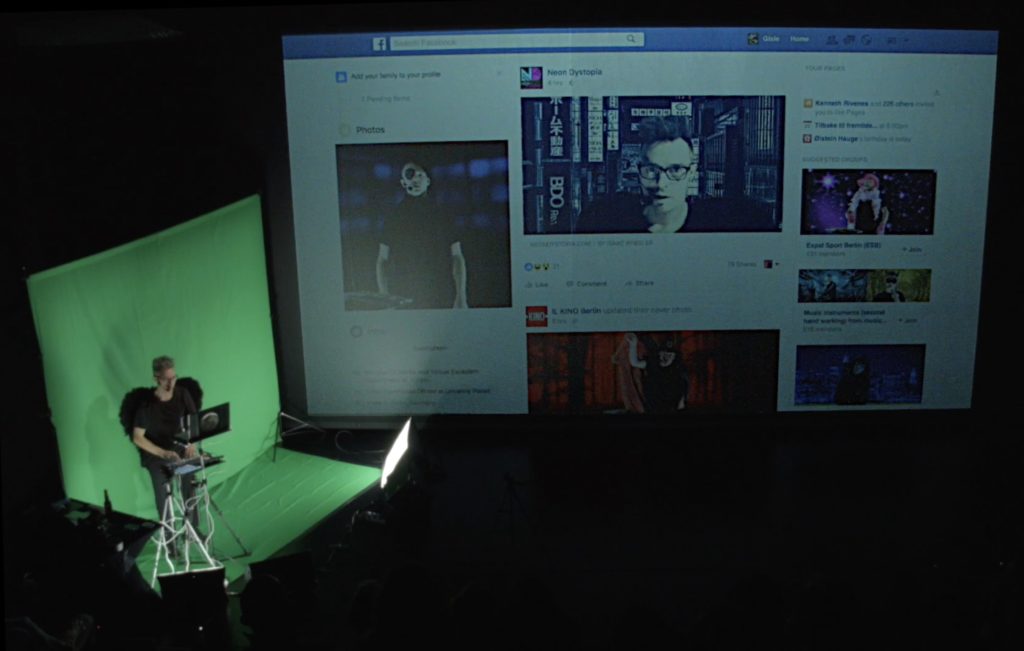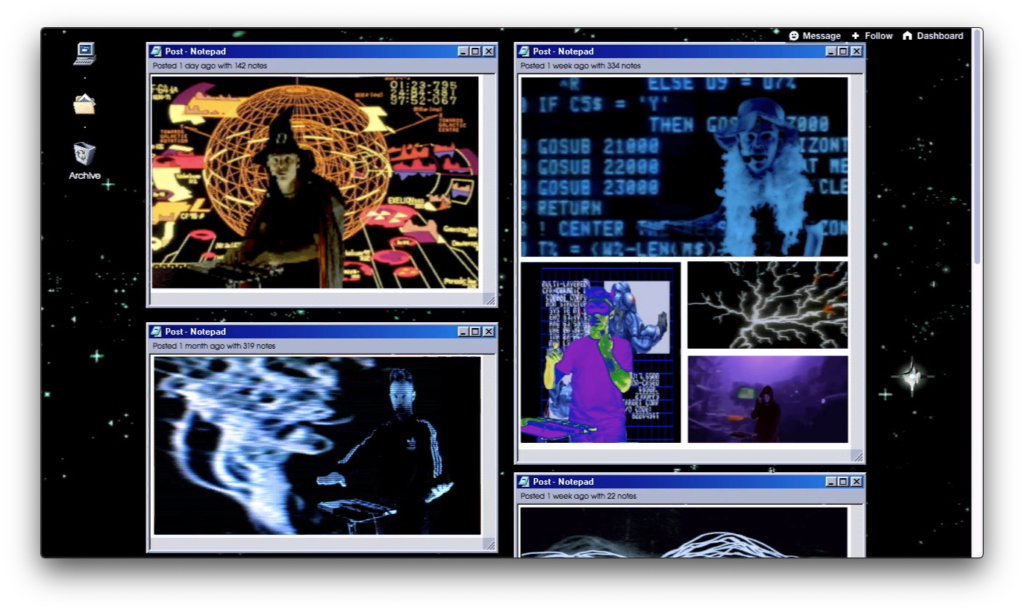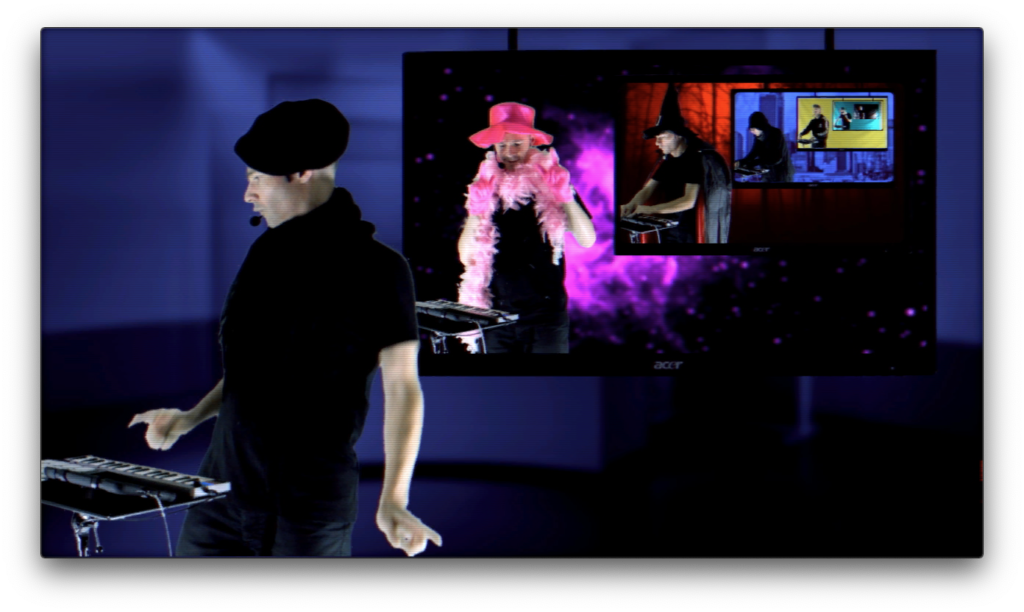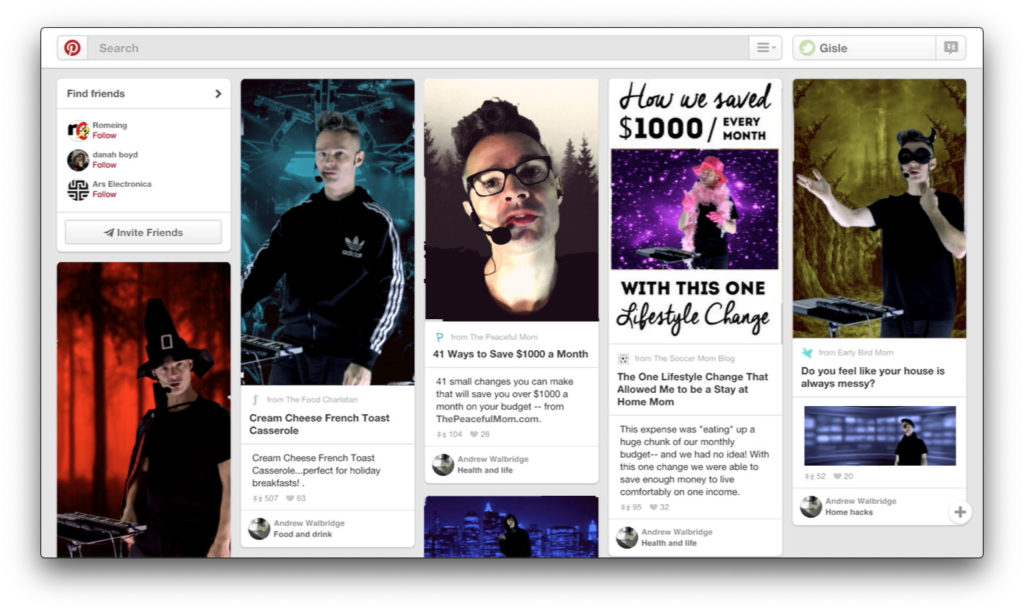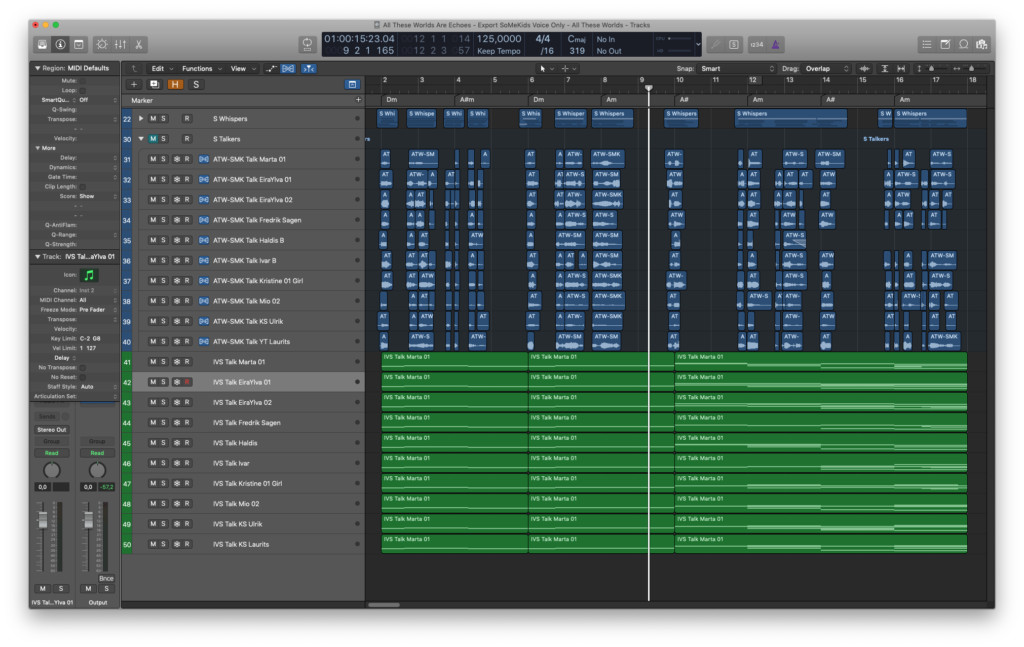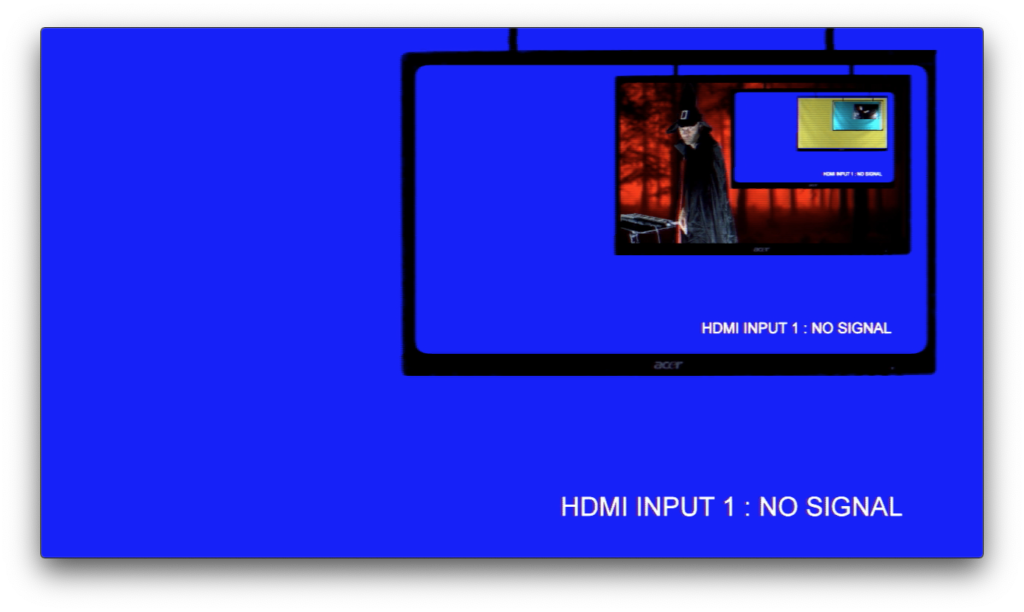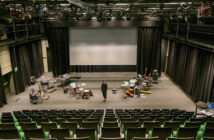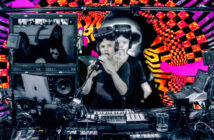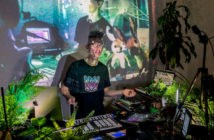The video above talks about how the track All These World Are Echoes from Ghoststorm was made, with sound and video examples. This text goes a bit deeper into some of the history, development, ideas and production.
 The track was several years the making. The first full draft I have is from 2016, however the theme and melody is even older, a simple piano and strings sketch I made in 2013. During 2016 I worked this sketch out as an up-beat electro-pop song for a segment of my solo performance There Is No Here Here, which was being performed at art, media and tech festivals around Europe. The main topic of this performance is how screens and living our lives online affects us. Some parts of this performance is now incorporated into the Ugress Live Cinema show.
The track was several years the making. The first full draft I have is from 2016, however the theme and melody is even older, a simple piano and strings sketch I made in 2013. During 2016 I worked this sketch out as an up-beat electro-pop song for a segment of my solo performance There Is No Here Here, which was being performed at art, media and tech festivals around Europe. The main topic of this performance is how screens and living our lives online affects us. Some parts of this performance is now incorporated into the Ugress Live Cinema show.
In this 2016 version, I did all the vocals in realtime and also performed all the social media profiles of myself in realtime. This part of the performance with ATW didn’t work particularly well, and I wasn’t happy witth the sound, so i nuked it from that show. But the theme of echo chambers and the melody and beats of the song stayed with me, I still thought it could become something.
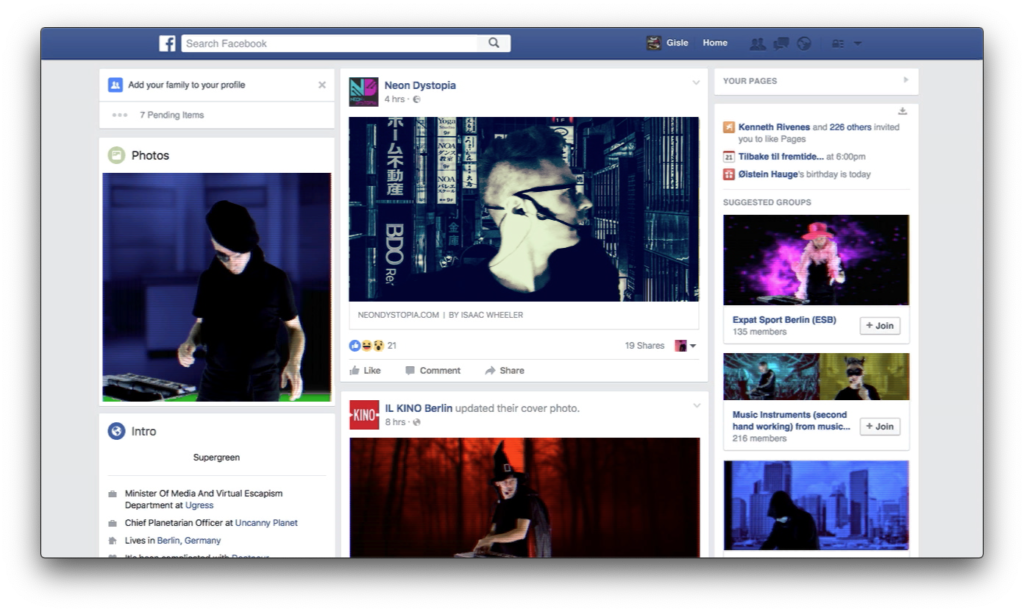 The track was then a candidate for all three of the “dark future” trilogi releases of The Wrong Future, Black Anorak and Ghoststorm the last few years. For each release, I kept trying out various directions and productions to make it sound the way I wanted. Finally, for Ghoststorm, I found a general idea for the whole album, and this idea also helped All These Worlds fall into place.
The track was then a candidate for all three of the “dark future” trilogi releases of The Wrong Future, Black Anorak and Ghoststorm the last few years. For each release, I kept trying out various directions and productions to make it sound the way I wanted. Finally, for Ghoststorm, I found a general idea for the whole album, and this idea also helped All These Worlds fall into place.
The main idea of Ghoststorm is to create music with “implanted memories”, music that sounds like it has a history, but that history is fake. Like replicants in Blade Runner, the music has nostalgia for a past that never existed.
The way I go about trying to make this, is is to use artificial intelligence to extract specific instruments from full mixes of specific genres, and recreate the sonic “essence” of a specific phenomena in each genre, for example heavy metal guitars of the 8oies, or 90ies breakbeats, or jazz solos of the 60ies. So I sample hundreds of tracks, categorize them, split them into their different parts, then recombine them into ghostly mashups of genres, and then i sample these blurry ghosts. So i effect, I’m sampling a wholly artifical memory, that sounds like something but is nothing. This is what makes the sound of the album a bit glassy and “fake”, its drenched in the textures of compression algorithms and AI processing, which I absolutely love.
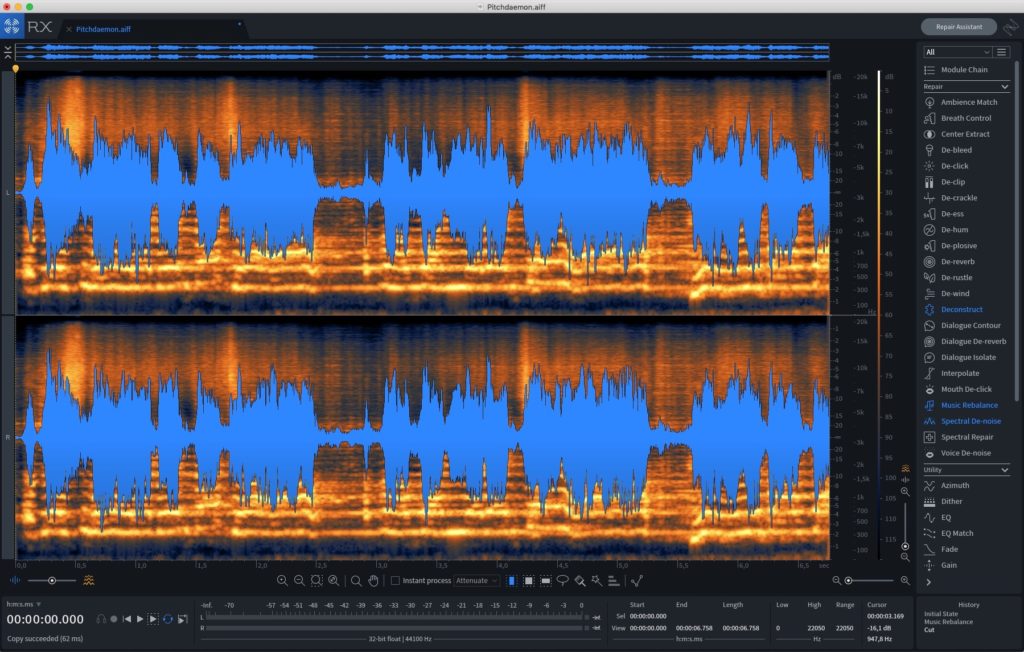 Technically I’m doing this with a combination of the genre tools of EchoNest and the AI demixing tools of Izotope RX, and I’ve also found the algorithms of Spotify extremely helpful, when I gather a collection of tracks with a specific sound or expression, Spotify is very good at suggesting additions to the collection, helping me identify fantastic sources I’d never find in a million recordshops. It does also make my weekly Discovery list insanely interesting.
Technically I’m doing this with a combination of the genre tools of EchoNest and the AI demixing tools of Izotope RX, and I’ve also found the algorithms of Spotify extremely helpful, when I gather a collection of tracks with a specific sound or expression, Spotify is very good at suggesting additions to the collection, helping me identify fantastic sources I’d never find in a million recordshops. It does also make my weekly Discovery list insanely interesting.
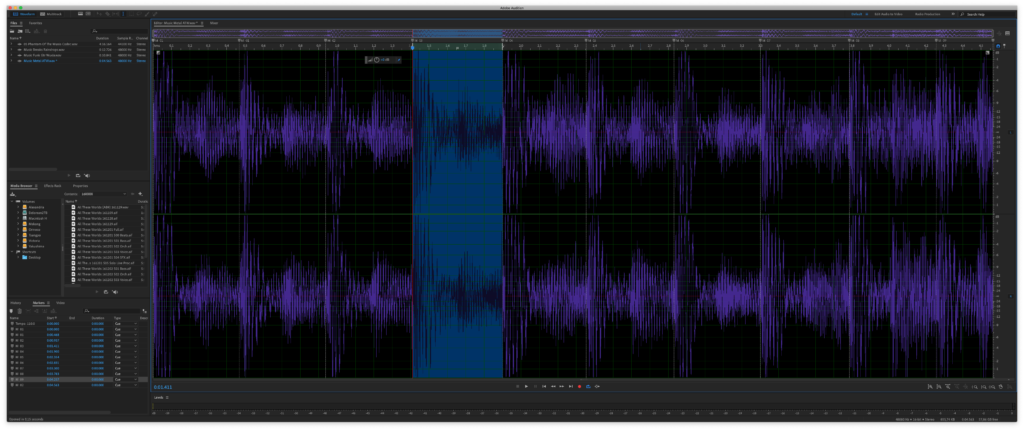 After having “fake” sources to sample or process, I then do my usual techniques of cutting every up into tiny slices with Adobe Audition, and I frequently tune every element inside each sample with the polyphonic retune tools of Melodyne, which makes it eaiser to develop and experiment with melodic phrases.
After having “fake” sources to sample or process, I then do my usual techniques of cutting every up into tiny slices with Adobe Audition, and I frequently tune every element inside each sample with the polyphonic retune tools of Melodyne, which makes it eaiser to develop and experiment with melodic phrases.
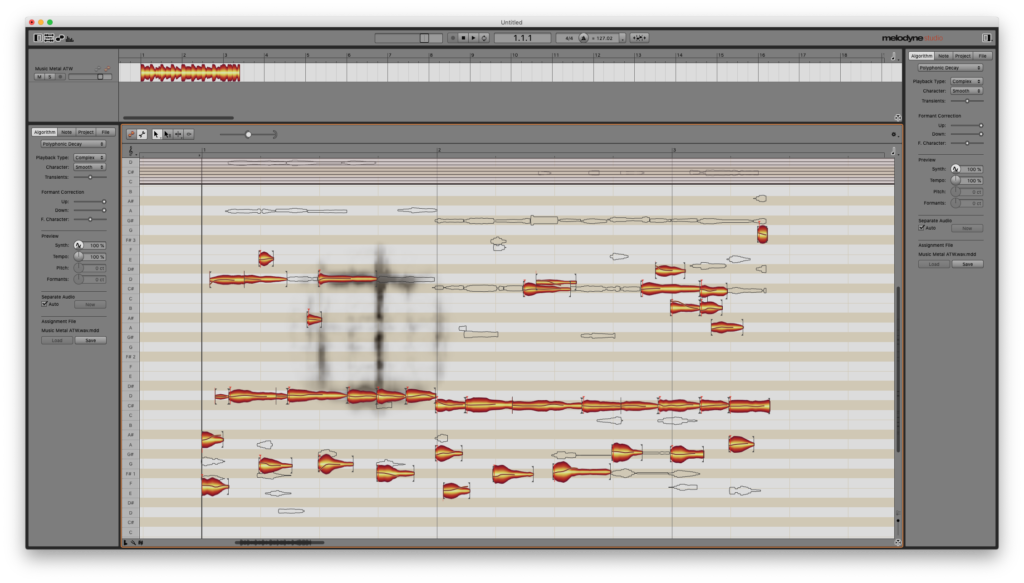 I tried to do the same with vocals, and have a version where black metal vocals are performing the text. But that was too much, even though a tiny bit of that is still in there, towards the end. The black metal was “wrong direction” so I thought to go the opposite direction, and have young kids instead. This being a track about echo chambers and the perils of social media, I wanted to have kids from social media singing it. So i posted on Facebook, if my friends wanted to record their kids, in exchange for icecream.
I tried to do the same with vocals, and have a version where black metal vocals are performing the text. But that was too much, even though a tiny bit of that is still in there, towards the end. The black metal was “wrong direction” so I thought to go the opposite direction, and have young kids instead. This being a track about echo chambers and the perils of social media, I wanted to have kids from social media singing it. So i posted on Facebook, if my friends wanted to record their kids, in exchange for icecream.
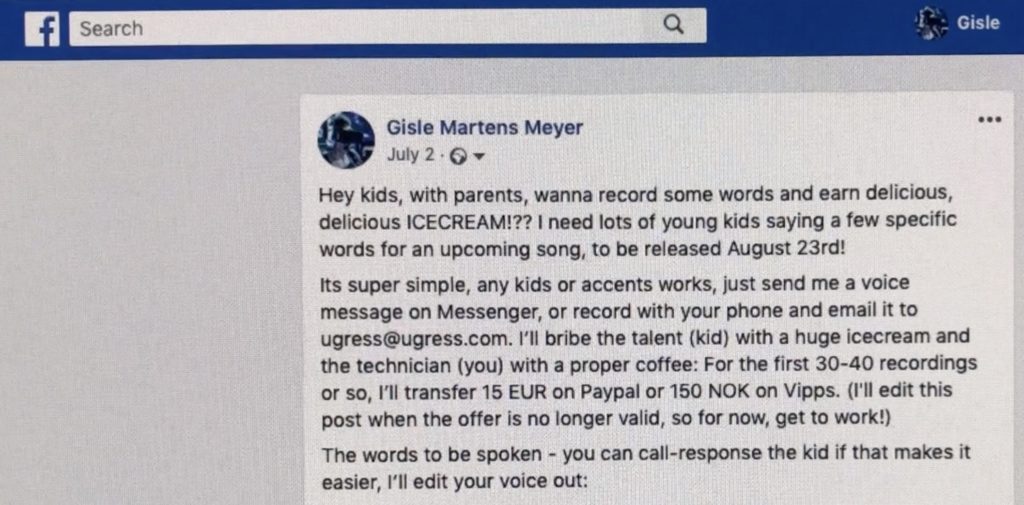 Around 30 or 40 people participated, and several of them with multiple kids or multiple variations. There were some hilarious takes. They simply sent me voice messages, and then its just a few days of pleasant meditative work cutting up and retiming everything to fit the track. I also ran all the kids individually through Izotope’s Vocalsynth, to make them “sing” the melody, and layered this with the original speech recordings.
Around 30 or 40 people participated, and several of them with multiple kids or multiple variations. There were some hilarious takes. They simply sent me voice messages, and then its just a few days of pleasant meditative work cutting up and retiming everything to fit the track. I also ran all the kids individually through Izotope’s Vocalsynth, to make them “sing” the melody, and layered this with the original speech recordings.
The track is built up pretty much like a regular pop song, with standard drums, bass, guitars, orchestra, voice layers. However, each layers consists of lots of “interactive elements”. The beats for example has a main beat, and then a few different subgroups of breakbeats, with different sidechain compression to push them in or out of focus as needed. The same with the bass synths, which are tightly dependent on the sidechain compression of the drums to establish its rhythm. On top of this there are the 80ies metal guitars, which are heavily filtered in and out through the track to allow for other elelements to breathe, and then the orchestra which sounds kind of huge, but its not very complicated. Then finally there is the voices, which again sidechain compress the other elements to carve its own space, and then special effects and transitions.
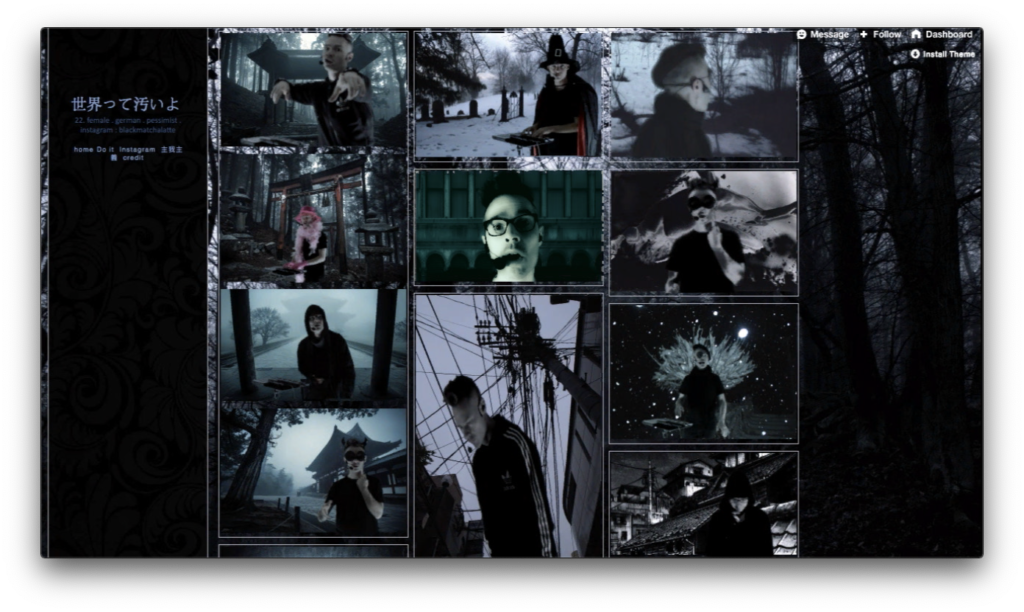 My own thoughts on this track, is that i’m about 80% satisfied with the track itself, but very satisfied that the track is just finished and released, as it was such a long process working on it. My main problem with the track is that I think its too busy, it feels to hectic, and it lacks a variation part. Even if the kids voices helps a lot with contrasting the relentless charging-a-head. But I think the track lacks a part somewhere that breaks things up a bit.
My own thoughts on this track, is that i’m about 80% satisfied with the track itself, but very satisfied that the track is just finished and released, as it was such a long process working on it. My main problem with the track is that I think its too busy, it feels to hectic, and it lacks a variation part. Even if the kids voices helps a lot with contrasting the relentless charging-a-head. But I think the track lacks a part somewhere that breaks things up a bit.
I did try several solutions for this, a part in the middle with a different tempo and tonality, breaking up the dramatic chords and the strong beats, but none of them was good enough. It always was better to drop the variation than to keep it. In the end i was out of time, and I choose to go with a compact version. I don’t necessarily regret that, but i wished I had more time. I think the track would have been better with a “variation” part slapped into it.
That’s about it for this one. I’m very grateful for the contribution of social media kids, not only for their voices, what I like best is that the “gloomy Wagner warning” is gleefully expressed from a younger generation than ours, before they’re really aware of what they’re warning us against.

